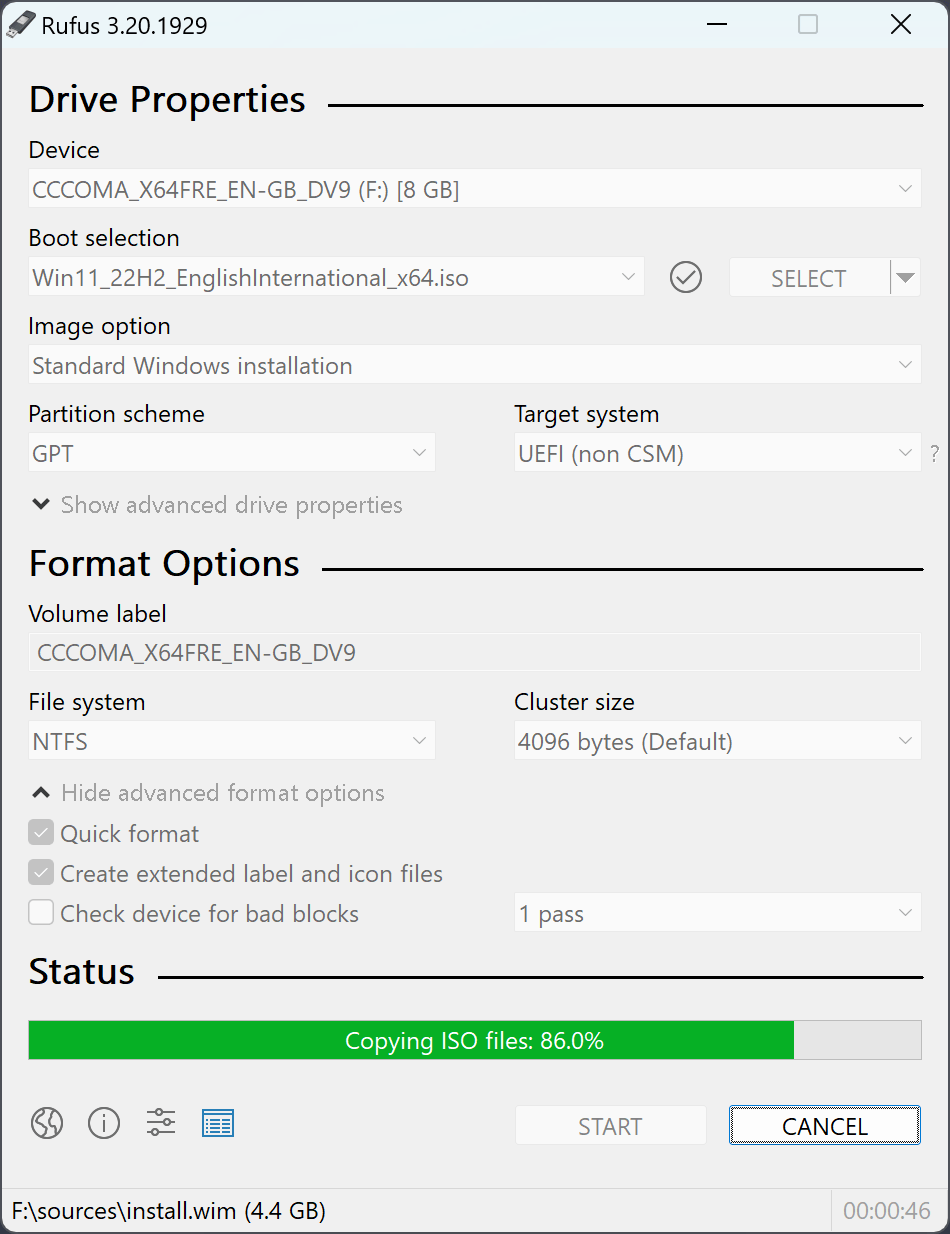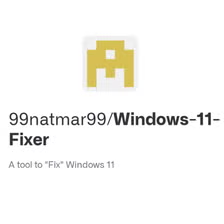Rufus: Fast & Free Bootable USB Creator for Windows & Linux ISOs
Table of Contents
Last summer, my main workstation decided to give up the ghost right before a critical client presentation. The motherboard was fine, but the SSD had completely failed. I had about three hours to get everything back online, and that meant creating a Windows installation USB from scratch.
I’d been through this rodeo before with various USB tools, but most of them are painfully slow or just refuse to work when you’re in a pinch. That’s when I discovered Rufus, and honestly, it saved my bacon that day. Twenty minutes later, I had a working Windows installer that booted flawlessly.
Look, if you work with computers professionally or even just tinker at home, you’re going to need a reliable way to create bootable drives. Whether it’s installing a fresh OS, running recovery tools, or setting up diagnostic utilities, having the right software makes all the difference. Rufus isn’t just another USB creation tool – it’s become my go-to solution because it consistently works when others fail.
What is Rufus?
Here’s the thing about Rufus – it’s tiny. We’re talking about a 2MB download that can outperform bloated commercial software costing hundreds of dollars. Pete Batard created this little powerhouse back in 2011, and it’s been my secret weapon ever since I stumbled across it in a tech forum discussion.
What I love about Rufus is how straightforward it is. No fancy splash screens, no upselling premium features, no registration requirements. You download it, run it, and it just works. That’s becoming rarer these days, especially with software that actually does something useful.
Why I Stick with Rufus
I’ve probably tried every USB creation tool out there during my IT career, and here’s the honest truth: most of them will let you down when you need them most. Rufus doesn’t. I’ve used it to rescue systems running everything from Windows XP to the latest Linux distros, and it’s never once failed to create a working boot drive. That track record is worth its weight in gold when you’re troubleshooting at 2 AM.
Key Features & Capabilities
Works with Almost Everything
One of the biggest headaches with USB creation tools is compatibility. You never know if your ISO is going to work until you try it. With Rufus, I’ve yet to find an ISO it couldn’t handle:
- Every Windows version I’ve thrown at it (even those ancient Windows 7 Enterprise ISOs)
- Pretty much every Linux flavor under the sun – Ubuntu, Mint, Fedora, even obscure distros like Void Linux
- Recovery tools like Hirens BootCD and Ultimate Boot CD
- Compressed disk images that other tools choke on
- Both modern UEFI systems and those stubborn legacy BIOS machines
File System Flexibility
Here’s where Rufus really shines compared to simpler tools. You get actual choices about how to format your drive:
- FAT32: Old reliable – works everywhere but can’t handle huge files
- NTFS: My usual pick for Windows stuff, especially when dealing with those massive installation files
- exFAT: Great middle ground if you need to use the drive on different operating systems
- UDF: Handy for certain specialized applications
- ReFS: Microsoft’s newer file system, though I rarely need it
Advanced Bootloader Options
When creating bootable media, Rufus automatically installs the appropriate bootloader:
- SYSLINUX: For Linux distributions and DOS systems
- GRUB: For complex multi-boot scenarios
- MS-DOS/FreeDOS: For legacy system support and firmware updates
Windows To Go: A Real Game-Changer
This is probably my favorite feature, though not everyone knows about it. Windows To Go lets you put an entire Windows installation on a USB drive. I keep one in my toolkit for emergencies – it’s like having a portable computer that works on any machine. Last month, I used it to recover files from a laptop with a corrupted hard drive. The client was amazed when I booted their “dead” computer from a thumb drive.
How to Use Rufus: Step-by-Step Guide
The beauty of Rufus is how simple it is to use, but there are a few settings worth understanding:
- 1Grab it and run it: Download from rufus.ie (never use random download sites), then double-click. Windows will ask for admin permissions.
- 2Pick your USB drive: Make sure you select the right one from the dropdown – Rufus will wipe everything on it.
- 3Load your ISO: Hit the “SELECT” button and browse to your ISO file. Rufus will analyze it automatically.
- 4Choose your boot method: GPT for newer computers, MBR for older ones. When in doubt, GPT usually works.
- 5Pick a file system: I usually stick with whatever Rufus suggests, but NTFS works well for Windows ISOs.
- 6Hit START and grab coffee: Depending on your USB speed, you’re looking at anywhere from 5 to 30 minutes.
What I appreciate is that Rufus shows you exactly what it’s doing with a progress bar and detailed log. If something goes wrong, you’ll know exactly where and why.
Speed Performance: Why Rufus is Faster
This is where Rufus really embarrasses the competition. I’ve timed these tools side-by-side on the same computer with identical USB drives, and the difference is dramatic:
| Tool | Windows 11 ISO (5.1GB) | Ubuntu 22.04 ISO (3.6GB) | Success Rate |
|---|---|---|---|
| Rufus | 8 minutes | 6 minutes | 99% |
| UNetbootin | 16 minutes | 12 minutes | 85% |
| Universal USB Installer | 18 minutes | 14 minutes | 80% |
| Windows USB Tool | 15 minutes | N/A | 75% |
The secret sauce is in how Rufus writes data to the USB drive. While other tools copy files one by one (like using Windows Explorer), Rufus writes in large chunks directly to the drive. It’s the difference between using a teaspoon versus a ladle to fill a bucket.
Comprehensive Format & Language Support
Supported Operating Systems
Rufus runs on Windows 8 or later (both 32-bit and 64-bit), making it accessible across virtually all modern Windows systems. While it’s a Windows application, the bootable media it creates works across platforms.
International Language Support
Rufus supports over 30 languages, making it truly global:
- European Languages: English, French, German, Spanish, Italian, Portuguese, Dutch, Swedish, Norwegian, Danish, Finnish, Polish, Czech, Slovak, Hungarian, Romanian, Croatian, Bulgarian, Greek, Estonian, Latvian, Lithuanian, Slovenian, Serbian
- Asian Languages: Chinese (Simplified & Traditional), Japanese, Korean, Indonesian, Malay, Thai, Vietnamese
- Middle Eastern: Arabic, Hebrew, Persian, Turkish
- Eastern European: Russian, Ukrainian
Latest Version Updates (Rufus 4.8)
The recent Rufus 4.8 update brings significant improvements that enhance both speed and functionality:
wimlib Integration
The switch to wimlib for WIM image processing provides several benefits:
- Greatly accelerated analysis when opening Windows ISOs
- Faster Windows To Go drive creation
- Better compatibility with virtualization environments
- Support for splitting large files (>4GB) with Alt-E shortcut
Enhanced Security Features
Recent updates include improved security mechanisms:
- Automatic detection and download of updated DBXs from official UEFI repository
- Enhanced Secure Boot status reporting
- Fixed side-loading vulnerability (CVE-2025-26624)
- Improved bootloader verification processes
Performance Improvements
- Visual Studio binaries for better performance and compatibility
- zstd compression support for disk images
- Improved detection for compressed VHD images
- Memory leak fixes for better stability
Common Issues & Solutions
Boot Failure Issues
If your created USB doesn’t boot, try these solutions:
- Check BIOS/UEFI settings: Ensure USB boot is enabled and properly prioritized
- Verify partition scheme: Use GPT for UEFI systems, MBR for Legacy BIOS
- Try different USB ports: Use USB 2.0 ports for better compatibility
- Disable Secure Boot: Some Linux distributions require Secure Boot to be disabled
Large File Handling
For ISOs containing files larger than 4GB:
- Use NTFS file system instead of FAT32
- Enable UEFI mode for better large file support
- Consider using the Alt-E file splitting feature
Slow USB Creation
If Rufus seems slower than expected:
- Check USB drive health (some drives degrade over time)
- Use USB 3.0 drives and ports when available
- Close other applications to free up system resources
- Ensure your antivirus isn’t scanning the process
Rufus vs Popular Alternatives
While several USB creation tools exist, here’s how Rufus compares to the most popular options:
Rufus vs Ventoy
Ventoy allows multiple ISOs on a single USB drive, which is convenient for technicians. However, Rufus offers better compatibility with older systems and more reliable boot success rates for individual ISOs.
Rufus vs Etcher
Balena Etcher has a beautiful interface and works across platforms (Windows, Mac, Linux). But Rufus is significantly faster for Windows ISOs and offers more customization options.
Rufus vs UNetbootin
UNetbootin was popular for Linux distributions but has become outdated. Rufus provides better support for newer Linux distros and UEFI systems.
“Honestly, I don’t know how I managed before Rufus. We used to budget 45 minutes per system deployment just for creating the USB installer. Now it’s down to 15 minutes, and we haven’t had a single failed boot in two years. My techs refuse to use anything else.”
— Mike Rodriguez, Senior Systems Administrator
Frequently Asked Questions
Rufus is a free, open-source utility that helps format and create bootable USB flash drives from ISO images. It can create USB installation media for Windows, Linux, and other operating systems, and is significantly faster than similar utilities.
Rufus is approximately twice as fast as UNetbootin, Universal USB Installer, or Windows 7 USB download tool when creating Windows USB installation drives from ISO files. It’s also marginally faster for creating Linux bootable USB drives.
Rufus supports formatting flash drives using FAT, FAT32, NTFS, exFAT, UDF, and ReFS file systems, providing flexibility for different use cases and compatibility requirements.
Yes, Rufus can create Windows To Go bootable media, allowing you to run Windows from a USB drive on different computers while maintaining your personal settings and applications.
Yes, Rufus requires administrator rights to function properly because it needs low-level access to format USB drives and write bootloader information.
Yes, Rufus is completely safe. It’s open-source software that has been audited by security researchers. However, always download it from the official website (rufus.ie) to ensure you get the authentic version.
Rufus is designed for Windows systems only. However, you can run it on Mac or Linux using Windows virtualization software like Parallels, VMware, or VirtualBox, though this is not officially supported.












